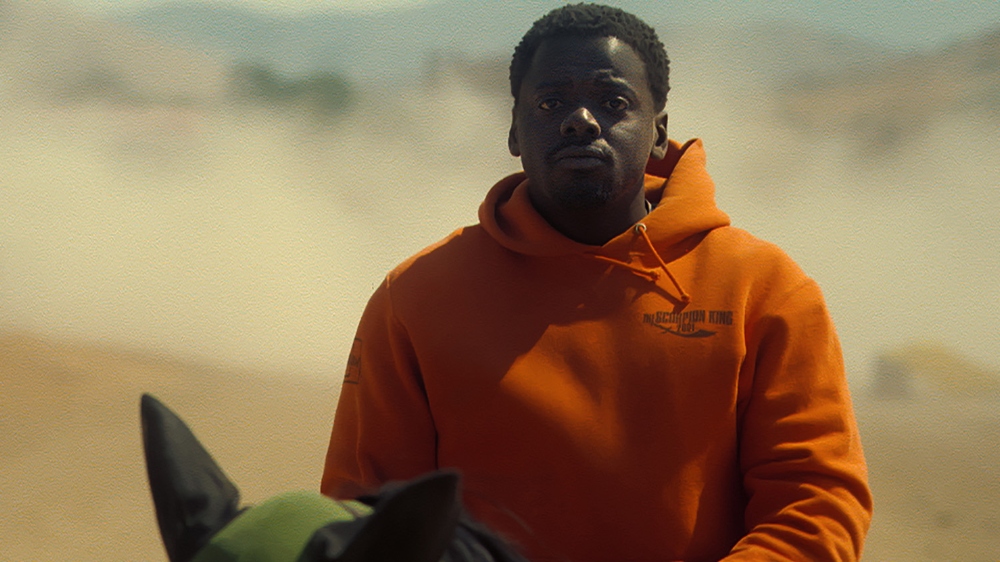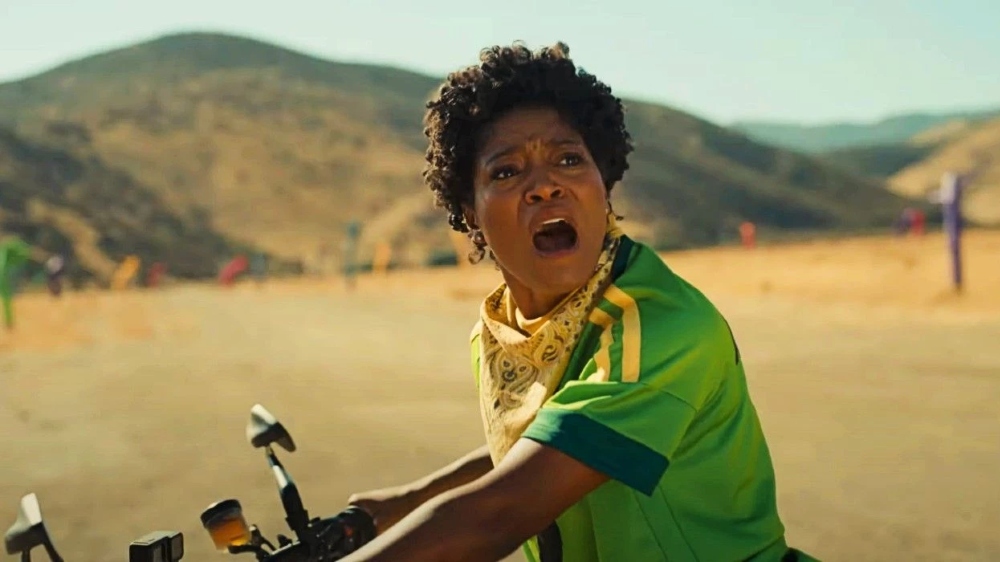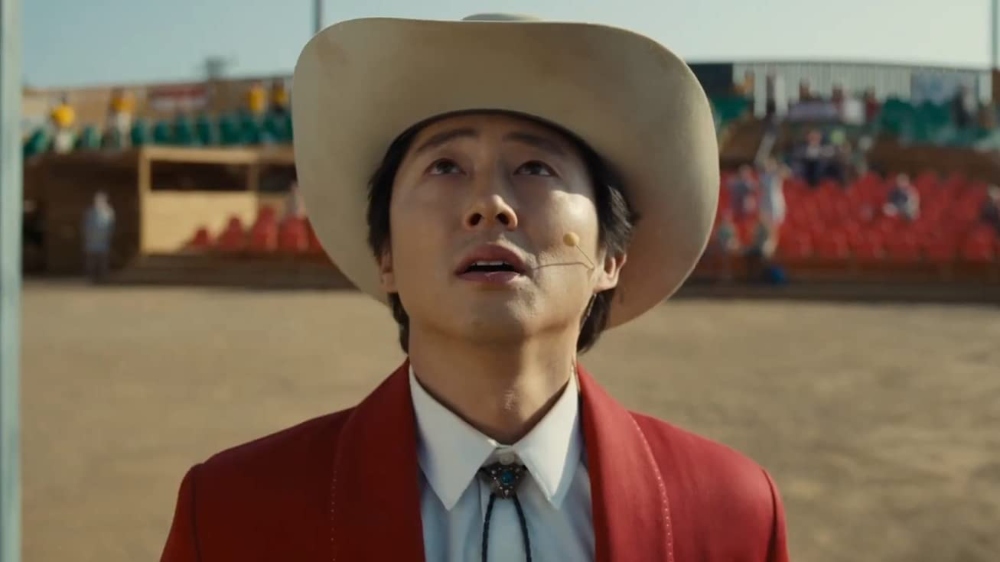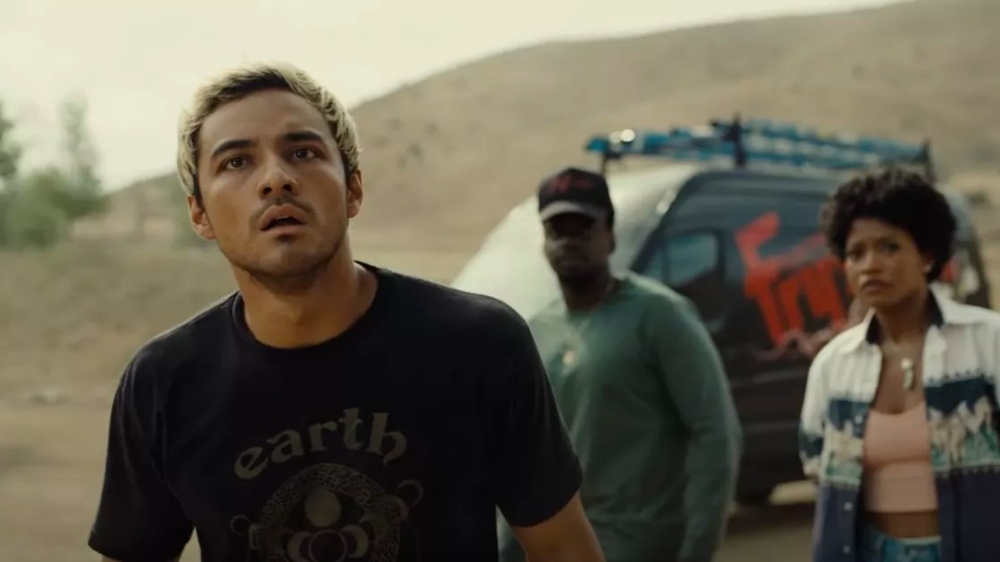
After writer/director/producer Jordan Peele stunned audiences with the surprising and refreshing Get Out in 2017, the obvious question was which trajectory his promising career would follow. How would Peele handle the success of his first film, which earned him an Oscar for his original screenplay, as well as nominations for Best Picture and Best Director? Would he turn out to be the next Steven Spielberg or the last guy who everyone thought would be the next Spielberg, M. Night Shyamalan? After seeing Peele’s third feature, it may still be too early to chart his trajectory, though his latest film, Nope, is certainly closer to the latter than the former, as it’s the work of a divisive but undeniably brilliant artist whose unique work doesn’t always land for general audiences.
Trailers for Nope have been teasing the film for a good while, and they’ve succeeded in avoiding major plot spoilers, not that there’s really much to spoil here. This review will endeavor to do the same, though it discusses thematic concepts that appear throughout the movie as well as some specific plot points in terms that are deliberately kept as ambiguous as possible. From the trailer, though, we know that we will be seeing the brilliant Daniel Kaluuya and the even more talented Keke Palmer as horse-wrangling siblings O.J. and Emerald Haywood, who turn to Steven Yeun‘s enthusiastic cowboy, Brandon Perea‘s geek squad-esque techie, and Michael Wincott ‘s deep-voiced cinematographer to help them make sense of some strange phenomenon in the sky.

Like so many movies that come out of Hollywood these days, Nope is one that amasses an astounding amount of talent on both sides of the camera but nevertheless flatlines under the weight of a rudderless script. Kaluuya and Palmer are both excellent — the former as a quiet, contemplative figure who is devoted to his work and is distrustful of most people; the latter as a louder, funnier, more confident yet more insecure version of her brother — while Yeun, Perea and Wincott all do fine work playing campier characters.
But besides its two leads, the most impressive element of Nope is its below-the-line contributions, chief among them, the work of Swedish cinematographer Hoyte van Hoytema, who has provided marvelous lighting and camera work for past Christopher Nolan epics such as Interstellar and Dunkirk. Here, van Hoytema is tasked with filming (with IMAX cameras) a long sequence of night scenes in the middle of the Agua Dulce valley/desert (where the film was shot and takes place) while permitting us to observe cleanly and crisply the goings on in the tenebrous sky. More generally, most of Nope asks the viewer to, in fact, look up into the heavens, requiring van Hoytema to exert himself in ways that are at times both subtle and tremendously consequential. To those who ask whether this movie must be seen on the big screen, I say “yup.”
But van Hoytema is not alone in his exemplary work. A distinct feature of most modern horror movies or thrillers is the louder, deeper soundtrack — the use of music, noise, and dialogue to confuse, stress, and distract the audience. Nope creates this constant state of anxiety thanks to its creepy soundtrack and innovative sound design. Sound kudos also belong to designer Johnnie Burn (The Killing of a Sacred Deer), who tops off the terror with sound effects that include the gentle brush of wind constantly sweeping through the vistas.

Ruth de Jong’s (Manchester by the Sea) production design is also worthy of mention, given that she is asked to pepper the indoor and outdoor scenery with loads of objects in the aftermath of certain windy visits. De Jong has fun with the assignment (keep an eye out for a pair of scissors on a desk that obviously recalls Peele’s last film, Us) but she also helps advance the plot, particularly with its references to other films involving horses, such as Sydney Poitier‘s Buck and the Preacher.
Which brings us to the parts of Nope that do not work — the various themes, references, subplots, backstories, and metaphors that weigh down Peele’s clunky original screenplay. One of those themes is the power of film itself, as seeing often means believing. Thus, the characters work on the fringes of the business, as the Haywoods own a ranch for film horses, while Yeun’s character is a former child star, and the film’s first few scenes are on TV/film sets. Indeed, one of the clear themes is that humans love to document their lives, especially the instinct to grab a camera when bad things happen.
Another theme addresses the inherent violence within all animals and how hard it can be to tame those natural-born instincts. For example, one of the stranger distractions in Nope is a subplot about a TV monkey gone rogue, as if Ham, the first chimp in space, had come back for vengeance. There are also horses galore, as advertised in the trailer and posters, a rogue cicada that gets in the way of a key recording, and at least one other mysterious creature that will grab your attention. But it’s unclear what Peele is saying with that killer monkey subplot, and it never pays off in any satisfactory way.

Perhaps the biggest theme of Nope is the one that works the least successfully because Peele ultimately betrays it. A central element of Get Out’s success was that it reimagined the classic horror film from an African-American perspective and interrogated the victimization of young Black men, both in film as well as in real life. Peele’s advice to his protagonist is to “get out,” as stated in the title. The title of Nope seems born of a similar approach, though it’s even less subtle here as Kaluuya and Palmer’s characters repeat the phrase at least a half dozen times.
But actions speak louder than words, and eventually, the characters in Nope inexplicably say “yup” and resume their dangerous plan to capture “the Oprah shot,” as they call it. Peele’s various explanations for these behavioral betrayals — the human desire to capture something on camera, the need to care for one’s land — are fine as far as they go, but they’re not wholly convincing and they remain self-imposed justifications nevertheless. Also sufficient would be, “This is a horror movie, and it’s not fun if the characters run away to safety at minute 78.” It may be fun to mock, as other horror franchises do, the stupidity of the character that runs back inside the house, but that knowing mockery is part of the fun of the genre.
Even setting aside that ultimate betrayal, however, Nope falls flat. Its ambitions are grand, its originality undeniable, and its effects both impressive and bombastic. Peele acknowledges being influenced by some of cinema’s greatest “spectacle” filmmakers, and it is great to see him effectively navigate a VFX-heavy movie with a larger production budget ($68 million) than both of his earlier films put together. But even the pulpiest of movie spectacles require stories that audiences care about in order to truly succeed. Nope boasts a few genuine scares, but that’s about it. Peele’s script just does not coalesce into something that most audiences will care to follow, turning the promise of a successful third act into — what else? — a cinematic “nope” that like the sibling connection between the film’s two leads, ultimately feels forced and unconvincing.
Grade: C+
Universal Pictures will release Nope in U.S. theaters on Friday, July 22.





